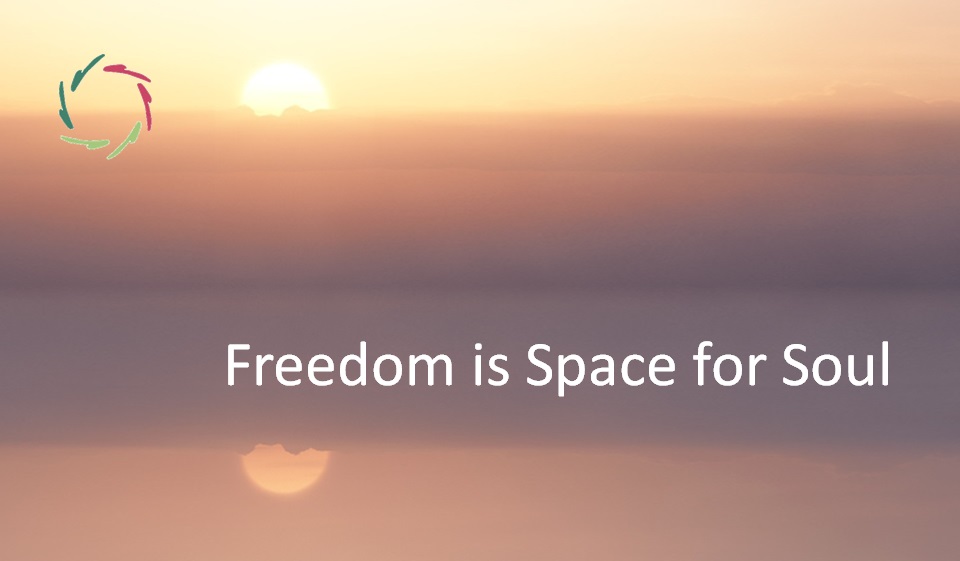Freedom is Space for Soul

Different people and different cultures seek soul in different ways. Yet there is a related search for freedom and space (free space) in all of them.
‘Soul’ is used here in a spiritual sense, transcending any specific religion or even religion as a whole. It’s about subconceptual mental processing without saying where or whether it ends.
A specific description of soul is always constrictive.
Therefore, it always puts a fence around soul.
This leads to a crucial contradiction. On the one hand, a description supports individuals in reaching out for soul ― especially from and within the cradle of one’s community. On the other hand, the same description is prone to bind the soul in ways it may not consent to from the inside out.
Is this one cause why different communities may be so hostile to each other concerning the deeper level ― even unknowingly as to where the hostility comes from?
Is this a major cause of many wars?
Soul seeks space.
One can see this, for instance, in children who come out into the open after being confined in a narrow space for some time ― such as a classroom. They can joyfully run around for a while just for the joy of running around for a while in freedom. Already when the bell rings, the shouting begins.
In the brain, this goes together with a heightened dopamine flow. Dopamine is the neuromodulator of expected reward and joy ― the joy of soul running wild, even for a bit.
An open space in which to be free
This feeling of freedom is not the direct result of a conscious choice. The freedom to be free is not altogether straightforward. An inner open space calls for daring to appreciate it as such. It’s no free lunch, but immensely much more.
It is, of course, a symbolic space. This makes it easier and more challenging to attain. It also makes the confinement into something that can readily be projected toward other people or cultures ― war again.
How, then, to attain freedom and space?
We can look at the religions for this. At the core, any age-old religion began as the yearning for this realization. Frequently, the founder goes to a space of unlimited freedom ― for instance, the desert or the inner universe, or both. After a boundless experience, he comes back with enough inspiration to make others want to follow. With some luck, this flows into what may become an age-old religion.
However, in my view, these age-old religions should yield. In fact, it’s high time they do so since they are incompatible with present-day rational thinking, and what they have always been meant for can better be brought in different ways, such as Open Religion.
‘Open’ as in open space in which soul can run freely
Then we are back to the original intention ― only, this time, in up-to-date rationality and in a way that can finally unite all people on this planet.
Can there be another future?
Meanwhile, people may fight, kill, and even bomb each other for the sake of something that already lies inside each of us. We are born to be free and spacious. The violence shows the importance. Therefore, let’s take our birthright.
Call, and you shall be heard. Knock, and you shall be opened.
Dare to be. Dare to be free.


